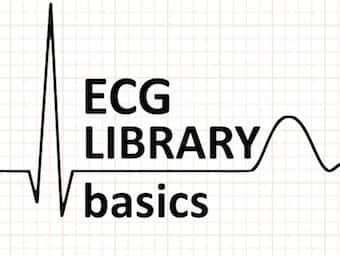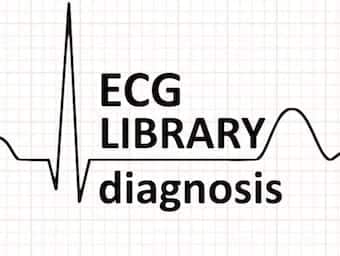
Right Bundle Branch Block (RBBB)
Right Bundle Branch Block (RBBB) activation of the right ventricle is delayed as depolarisation spreads across septum from left ventricle.

Right Bundle Branch Block (RBBB) activation of the right ventricle is delayed as depolarisation spreads across septum from left ventricle.

An important rhythm distinction between ventricular (VT) or supraventricular (SVT with aberrancy) this will influence your patient management

Also known as primary sinus tachycardia, inappropriate sinus tachycardia (IST) is a generally benign condition that has a prevalence of ~1% in the general population

Bifascicular block is the combination of RBBB with either LAFB or LPFB. Conduction to the ventricles is via the single remaining fascicle.

Epsilon wave is a small positive deflection buried in the end of the QRS complex on the ECG. Characteristic ARVD arrhythmogenic right ventricular dysplasia

Atrioventricular Nodal Reentrant Tachycardia (AVNRT) is a type of SVT and is the commonest cause of palpitations in patients with hearts exhibiting no structurally abnormality.

Defined as PR interval > 200ms, commonly caused by AV nodal blocking drugs

RPWT is the time from onset of earliest Q wave or R wave to the peak of the R wave in lateral leads

ST segment is the flat section of the ECG between end of S and start of the T wave between ventricular depolarization and repolarization EKG

Misplacement of V1 and V2: Don’t let this mistake mess up your ECG interpretation! Manifesting with P wave, Q wave, T wave changes and Brugada II pattern

The ECG is important in the assessment and management of poisoned patients for: screening; diagnosis; prognosis; and monitoring progression to guide management and disposition

Wellens syndrome - learn how to recognise this sign of critical LAD occlusion, with some great ECG examples from the LITFL ECG library